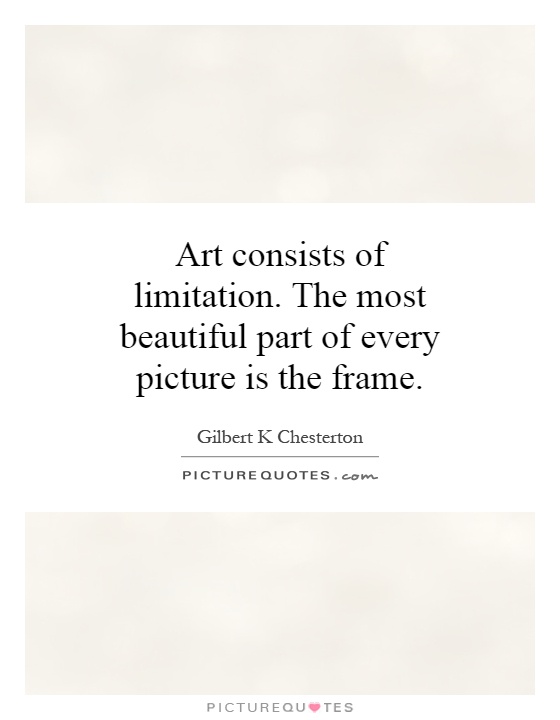Art consists of limitation. The most beautiful part of every picture is the frame

Art consists of limitation. The most beautiful part of every picture is the frame
Gilbert K. Chesterton, a renowned English writer, poet, and philosopher, once famously said, "Art consists of limitation. The most beautiful part of every picture is the frame." This statement encapsulates Chesterton's belief that boundaries and constraints are essential components of artistic creation. In his view, it is the limitations imposed on an artist that give shape and structure to their work, allowing for the true beauty of the piece to shine through.Chesterton's assertion that "art consists of limitation" can be interpreted in various ways. One interpretation is that constraints force artists to make deliberate choices and prioritize certain elements over others. By setting boundaries, artists are forced to focus on what is truly essential to their work, resulting in a more cohesive and impactful piece of art. In this sense, limitations can be seen as a catalyst for creativity, pushing artists to think outside the box and find innovative solutions to their artistic challenges.
Furthermore, Chesterton's statement can also be understood as a commentary on the role of structure and form in art. Just as a frame provides a boundary for a painting, giving it a sense of completeness and unity, limitations in art can serve to enhance the overall aesthetic appeal of a piece. By defining the parameters within which an artist must work, limitations can help to create a sense of balance and harmony in the composition, drawing the viewer's attention to the most important elements of the work.












 Friendship Quotes
Friendship Quotes Love Quotes
Love Quotes Life Quotes
Life Quotes Funny Quotes
Funny Quotes Motivational Quotes
Motivational Quotes Inspirational Quotes
Inspirational Quotes